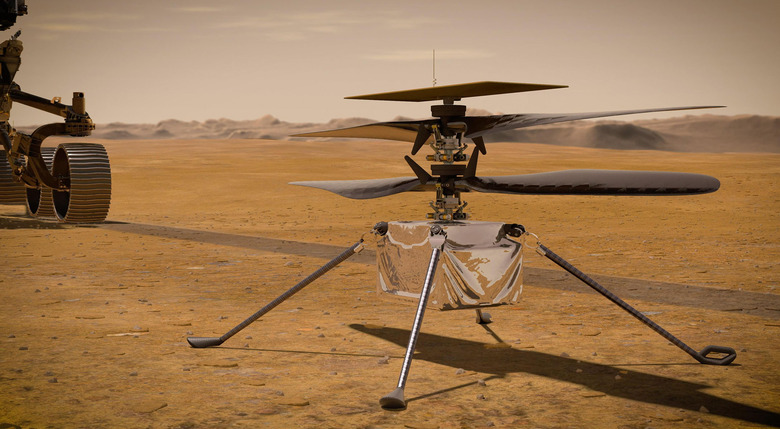Feast Your Eyes On The Most Incredible Video From Mars You'll Ever See
NASA's Mars helicopter took flight on the Red Planet early this morning in a first-of-its-kind demonstration of a manmade aircraft sustaining powered flight on another planet. It's a major historic moment and while we knew about the flight and even had a single image from the helicopter to prove that it flew, we didn't have video. Until now, of course, as NASA's Jet Propulsion Laboratory has since updated the world with footage shot by the Perseverance rover. The video clip shows the helicopter gearing up for its big flight and then taking off. It hovers for a while before landing softly back on the ground.
The helicopter's flight is a very big deal for NASA for many reasons, but the biggest is that it represents the future of planetary exploration. It likely won't be long before NASA and other space agencies around the world begin to consider powered flight as a way to more rapidly and efficiently explore other planets. For now, we have a single video of a helicopter flying on Mars, and that's more than enough
A description of the video via NASA's Jet Propulsion Laboratory:
In this video captured by NASA's Perseverance rover, the agency's Ingenuity Mars Helicopter took the first powered, controlled flight on another planet on April 19, 2021. The rover was parked at "Van Zyl Overlook," about 211 feet (64.3 meters) away in Mars' Jezero Crater and chronicled the flight operations with its cameras.
These images from the rover's Mastcam-Z cameras show the helicopter hovering above the Red Planet's surface. During this first flight, the helicopter climbed to an altitude of 10 feet (3 meters), hovered, and then touched back down on the surface of Mars.
The 4-pound aircraft doesn't have any scientific instruments. It has no mission beyond flying for the several weeks it has left, and aside from the hardware that records data that is sent back to Earth about each of its flights, it has no sensors or scientific equipment of any kind. The idea is that if Ingenuity can demonstrate that sustained, stable flight in the Martian atmosphere is possible, that may open the door to aerial drone exploration of Mars. Such an aircraft could rapidly move from one area to another, and if it's packed with scientific equipment it could take readings from all over a region of Mars over the course of just a few years.
Of course, Mars has its own tricks up its sleeve that would make such a mission even more daring. Specifically, Martian dust storms regularly rock the planet and some can even engulf the entire world. Such a storm would keep the vast majority of exploratory aircraft on the ground, which would hinder exploration and potentially cut a pricey mission short. We'll have to wait and see what NASA thinks after Ingenuity's mission is over, but for now, things are looking rather good.
